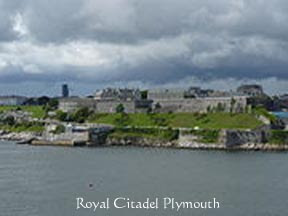 It has been a depressing summer weatherwise and on the financial front too. Today I skived off work a little early in order to transfer a proportion of my meagre wealth into a safer haven than it was with HBOS bank. Rumour has it that the takeover of HBOS by Lloyds, to prevent the former going under, may not go smoothly and investing in a bank whose assets are mainly tied up with dodgy mortgages seems to be a bit risky at this moment in time. The sun was out for a brief while so I decided on a stroll round Plymouth waterfront just a few minutes from where I live
It has been a depressing summer weatherwise and on the financial front too. Today I skived off work a little early in order to transfer a proportion of my meagre wealth into a safer haven than it was with HBOS bank. Rumour has it that the takeover of HBOS by Lloyds, to prevent the former going under, may not go smoothly and investing in a bank whose assets are mainly tied up with dodgy mortgages seems to be a bit risky at this moment in time. The sun was out for a brief while so I decided on a stroll round Plymouth waterfront just a few minutes from where I live Plymouth waterfront is steeped in history and it is a priviledge to have such a place on one's doorstep. I had a camera in my pocket and took a few shots to embellish this post. Below are some of the plaques commemorating some of the historical events that had their beginnings at what is now known as Mayflower Steps. It was from these steps that the Pilgrim Fathers boarded the Mayflower to travel to America to create a settlement there. It was here that the first emigrants to Newfoundland, New Zealand, Bermuda and many other places set sail.
Plymouth waterfront is steeped in history and it is a priviledge to have such a place on one's doorstep. I had a camera in my pocket and took a few shots to embellish this post. Below are some of the plaques commemorating some of the historical events that had their beginnings at what is now known as Mayflower Steps. It was from these steps that the Pilgrim Fathers boarded the Mayflower to travel to America to create a settlement there. It was here that the first emigrants to Newfoundland, New Zealand, Bermuda and many other places set sail. 
Above the waterfront is the Royal Citadel, built by King Charles II in the 17th Century after the English civil war. As Plymouth fought on the side of parliament against the royalists. the guns of the citadel pointed over the city as well as out to sea. The restored king did not trust the Plymouthians!!!! 

Near the Mayflower steps is where Robert Lenkiewicz, Plymouth's well known artist, had his studio. Sadly he died a few years ago but his pictures now command a high price. He was quite a character and attracted much publicity. About twenty years ago he wanted my eldest daughter to sit for him. I strongly discouraged her as most of his female sitters seemed to end up pregnant with his many children! Lenkiewicz befriended a tramp in the city and christenened him Diogones. When Diogones died the artist had him embalmed and concealed the body. It was only found after Lenkiewicz himself died.

Alongside his studio was the "Barbican Mural" which has now fallen into disrepair. When painted it was impressive and quite a tourist attraction. I think the city fathers should be condemned for not ensuring it stayed in good repair
Plymouth still has some of its historical features. This is New Street which was Rag Street in the 17th century. I read an historical novel a while back - "No More the Sword" by Marcia Treece. The novel centred around a fictional family that lived in Rag Street during the turmoil of the English Civil War.
Time for bed!






No comments:
Post a Comment